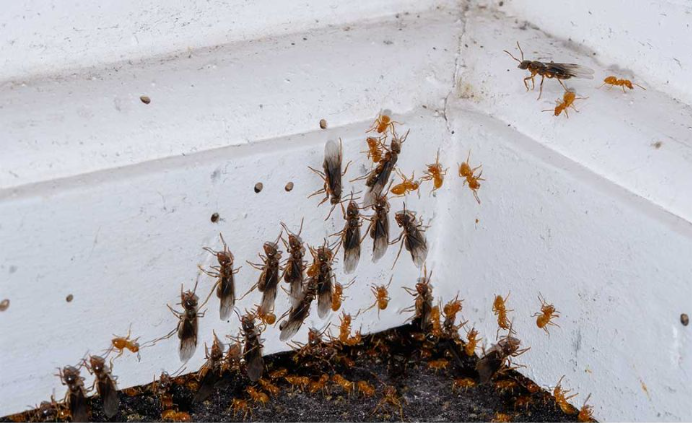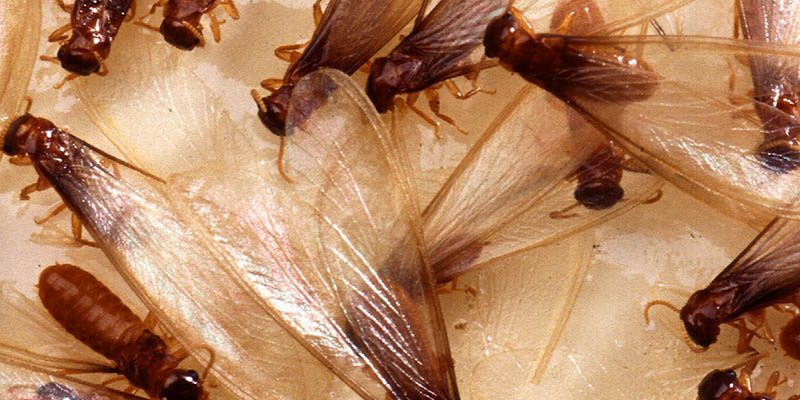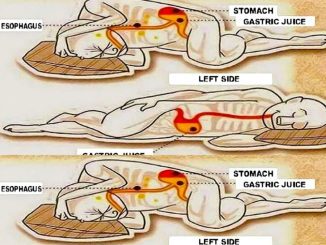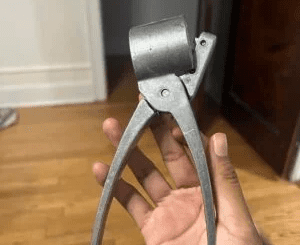Discovering flying ants in your home can be both alarming and frustrating. These tiny intruders often show up unexpectedly, and while they may look harmless, they can signal a bigger problem if not addressed quickly. So, what should you do when you spot them? In this article, we’ll explore what flying ants are, why they might be inside your home, and how to effectively eliminate and prevent them from returning. Let’s get started.
What Are Flying Ants? Understanding Their Nature

Flying ants are essentially mature ants that have reached the reproductive stage of their lifecycle. These ants are known as “swarmers,” and they typically emerge to mate and establish new colonies. While they might be harmless by themselves, their presence can indicate a growing ant colony inside or near your home.
- How to Identify Flying Ants: Flying ants have elbowed antennae, a pinched waist, and two sets of wings, with the front wings longer than the back. This sets them apart from termites, which have straight antennae, a thick waist, and equal-length wings.
- When Do They Appear? You’ll often notice flying ants during warm, humid conditions, typically following heavy rain. They appear in large numbers and may swarm around windows, light fixtures, and other entry points.
Understanding these basics can help you take the right steps to get rid of these pests and protect your home.
Immediate Actions to Take When You See Flying Ants
If you find flying ants in your house, quick action is essential to prevent them from multiplying and spreading.
- Close Off Entry Points: The first step is to identify and seal potential entry points. Check around windows, doors, and cracks in walls. Use caulk to seal gaps and ensure windows have tight-fitting screens.
- Eliminate Food Sources: Ants are naturally drawn to food, so make sure to clean up crumbs, spills, and food residues promptly. Store food in sealed containers and keep garbage bins covered.
- Vacuum Up the Ants: Use a vacuum cleaner to capture any visible flying ants. Dispose of the vacuum bag or canister contents outside to prevent the ants from re-entering your home.
Taking these steps right away can help limit the spread of flying ants while you plan a more long-term solution.
Long-Term Strategies to Get Rid of Flying Ants
Once you’ve handled the immediate problem, you’ll want to take more permanent measures to eradicate flying ants and prevent their return.
- Set Up Ant Bait Stations: Ant baits are a highly effective way to kill ants, including flying ones. Place bait stations in areas where you’ve seen ant activity. The ants will carry the poison back to the colony, eventually killing it.
- Use Insecticide Spray: Apply a residual insecticide around potential entry points, such as windows, doors, and baseboards. Make sure to follow the manufacturer’s instructions to ensure safe and effective use.
- Hire a Professional: If the infestation persists or seems severe, it’s best to call a pest control expert. A professional will have the tools and knowledge to locate and eliminate the colony effectively.
Using a combination of these strategies will help ensure a more thorough elimination of flying ants from your home.
How to Prevent Flying Ants From Returning

Prevention is key to keeping flying ants away for good. By making your home less attractive to these pests, you can reduce the chances of future infestations.
- Keep Your Home Clean: Cleanliness is one of the most effective ways to prevent ants. Regularly wipe down counters, sweep floors, and ensure food is stored securely.
- Fix Moisture Issues: Ants are drawn to moist environments, so check for leaks in your home. Repair leaky pipes, use dehumidifiers, and ensure proper ventilation, especially in basements and bathrooms.
- Inspect Your Home Regularly: Conduct routine inspections around your home’s perimeter for any signs of ant nests or potential entry points. Seal cracks, gaps, and crevices to prevent ants from getting inside.
These proactive measures can significantly reduce the likelihood of flying ants invading your space.
Are Flying Ants Dangerous? Understanding the Risks
While flying ants aren’t typically dangerous, they can cause problems if left unchecked.
- Health Risks: Most species of flying ants do not bite or sting, but some may bite when threatened. The bites are generally harmless, causing minor irritation at most.
- Structural Damage: If the flying ants turn out to be carpenter ants, there’s a risk of structural damage. Carpenter ants can chew through wood to create tunnels, which can weaken the integrity of wooden structures in your home.
- Food Contamination: Ants can contaminate food sources, making them unfit for consumption. Keeping a clean kitchen is essential to prevent ant-related food contamination.

Understanding these risks can help you address the issue more effectively and avoid bigger problems down the road.
Conclusion
Finding flying ants in your house is not just an inconvenience; it can be a sign of a larger infestation. By identifying the ants correctly and taking immediate steps to block their entry, remove food sources, and eliminate them, you can prevent these pests from taking over your space. Long-term strategies, such as using ant baits and sealing gaps, are essential to maintain an ant-free home. Remember, prevention is just as crucial as treatment. By keeping your home clean, dry, and well-sealed, you can ensure that flying ants are not welcome in your living space. Taking these steps promptly will save you from potential damage and discomfort, keeping your home safe and comfortable.


